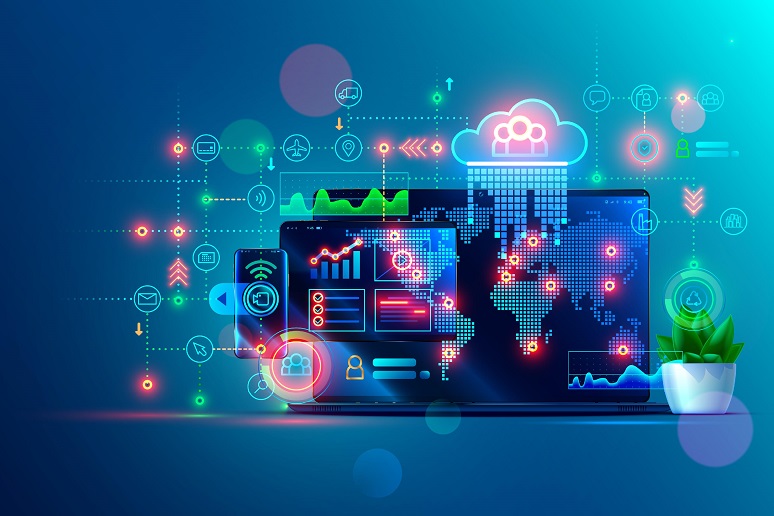The face of the workforce is rapidly changing. According to
the U.S. Department of Labor, millennials now make up 35 percent of the total workforce, with this number expected to escalate to 75 percent by 2025. For businesses and users that are relying on traditional technology, this poses a very real challenge.
Consider that millennials are the first generation to know only the Internet, mobile phones, and social media. They are more comfortable using text than email, can get their work done at any time of day or in any location, and demand a greater work-life balance than previous generations. The events of the last two years have solidified the desire for more freedom in the workplace, as they — and their employers — found that it is possible to remain productive in any location.
A New Paradigm
Employers are also undergoing a fundamental shift in the way they source work. There is an increasing shift toward using outside contractors and freelancers, which companies are finding can be more efficient and expedient for managing projects and completing tasks.
Managing an external workforce comes with its own set of issues, especially when it comes to maintaining an efficient and collaborative environment. The legacy collaboration platforms that comprise meetings, messaging, chat, and other tools are simply not designed to provide a natural, seamless experience with participants outside the corporate firewall.
There are security concerns, and internal collaboration capabilities are not even integrated with other business workstreams like scheduling, project management, and accounting. Instead of improving workflows, traditional solutions often form a frustrating barrier between the business and its workforce, delaying progress and costing money.
We have all experienced the frustration of not having immediate visibility into a colleague’s calendar to set up a critical meeting or having to toggle between multiple applications for something as simple as locating and sharing a file during a videoconference. And we have all held our breath when we’ve been unable to join a conference due to the ever-changing and inconsistent relationships between our browser and whatever collaboration platform that’s in use at that particular moment.
To address these workflow frictions, which are only becoming more commonplace, we need a new approach. Rather than rely on legacy tools that aren’t aligned with modern requirements, businesses should instead invest in solutions that are specifically designed to satisfy the new way of working.
The shift in the workforce means that businesses are relying more on temporary and project-based help with expertise in specific areas. These project-based and temporary workers are comfortable working at any time of day and at any location. They likely are working for more than one organization and may have created a schedule that allows them to maximize time with family or fulfill other personal desires. These team members relish freedom and flexibility, but they also understand that their livelihood depends on consistency and performance. And they need business tools that allow them to perform.
Mobile First
Not only is mobile the preferred device for the millennials that make up a significant portion of today’s workforce, in many cases it may be the only device. Many vendors have developed apps specifically for mobile, but these are usually scaled-down versions of the desktop experience. While these mobile apps may provide easy access to the most commonly used features, these often lack the full capabilities that are available on the desktop, limiting the capabilities needed by workers whose primary device is a phone or tablet.
To meet today’s demands, the collaboration suite should deliver the full functionality typically provided on desktop devices so that all stakeholders have immediate access to the same capabilities — all without impacting security and compliance.
Workstream Collaboration
The term "workstream" generally encompasses the people, tasks, and processes that are needed to complete a project or achieve a common goal. This could range from a somewhat simple task like obtaining approvals for a social media post to a more complex undertaking such as executing a global ad campaign.
Workstream collaboration in a non-traditional setting should give businesses and staff the ability to manage all the processes associated with an assignment in a virtual, seamless, and secure manner. The solution should work across all network infrastructures to ensure that team members have a consistent and productive experience however they choose to work.
It should be secure and compliant, of course, but it should also be able to integrate with other business applications, like project management software, corporate databases, and accounting, to ensure that the entire time can be productive. Specific features should be accessed from any device, and users should feel empowered to work as independently or collaboratively as they like.
Management Challenges
In traditional environments, employers often use ERP software to manage employee details like credentials, reviews, and compensation. However, information related to contractors or freelancers is typically managed outside of these systems, if at all. Since the face of the workforce is changing, our team members are just as comfortable working from a dog park or on the way to the dry cleaners as well as their home office, it is time to bring these critical processes into the collaboration environment.
The modern platform should allow for important human resource management tasks like scheduling, administration, and performance reviews. Advanced platforms now offer ‘smart contract’ capabilities embedded into the system, enabling the business and contractor to agree to terms and engage directly in the solution. There’s no need to send documents back and forth and scan signatures. This is not only an efficient mechanism to manage staff; some platforms can also assign an NFT into the smart contract, ensuring the contractor receives payment upon completion of the assignment.
Secure, Compliant Transactions
Of course, every interaction, transaction, and activity must adhere to corporate compliance and government mandates.
This includes password protection and encryption, but it’s also about adhering to SOC2, HIPAA, and, for financial institutions, SOX compliance. Even though a business may use outside team members, there is no excuse that any communication and work should fall outside of the security and data privacy framework.
Moving Forward
Yes, legacy collaboration services have performed admirably in traditional settings. But we are quickly learning that they are ill-suited to meet the demands of the next generation of workers — and their employers — who are looking for mobile, robust, flexible, and simple solutions to complete their assignments.
Rather than force team members to adopt unfamiliar, unproductive, and inefficient technologies — or change their work habits altogether — businesses would be well-advised to leverage the next generation of workstream collaboration platforms that maximize performance and optimize flexibility. After all, this is the future of work.










